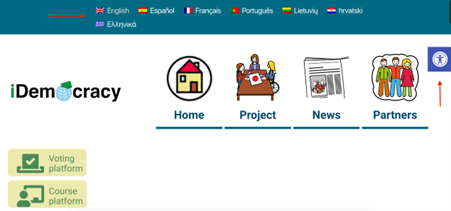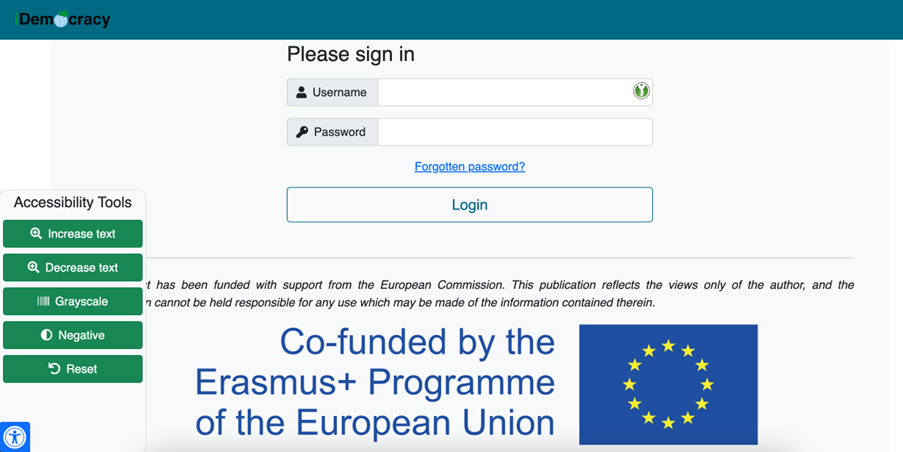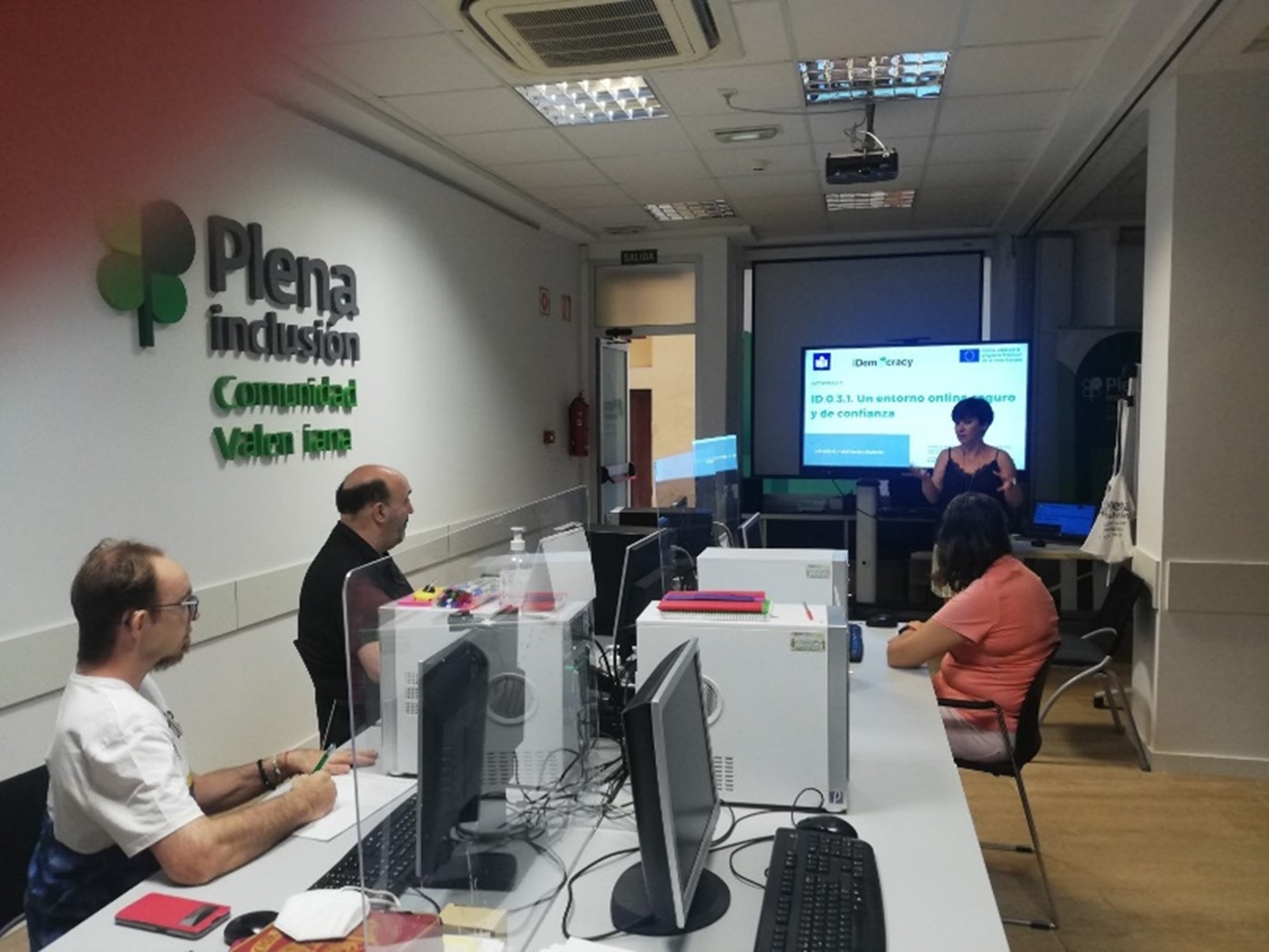Abstract
IDemocracy is a project funded by the European Commission with the aim of increasing democratic capabilities in People with Intelectual Disabilities (PIDs).
A special emphasis is put on the use of democratic rights in the digital society.
In the IDemocracy project, a voting platform has been created from scratch that lets users practice their democratic rights in a simulated environment. They can both participate in voting campaigns and create their own. This is especially important since people with intellectual disabilities should also actively lead proposals of new initiatives at all levels, from community up to the whole society.
A learning platform has also been made available for the users so they can learn the contents of the project at their own pace. The training materials are available for anyone in the different languages of the project partners and in English language.
Introduction
Democratic rights for persons with intellectual disabilities are not the same depending on the country. The Convention on the Rights of Persons with Disabilities (CRPD) established an equal recognition of everyone before the law (Article 12) and that “States Parties shall guarantee to persons with disabilities political rights and the opportunity to enjoy them on an equal basis with others” (Article 29). Specifically, an environment where any person with intellectual disability can “effectively and fully participate in the conduct of public affairs and (…) encourage their participation in public affairs”.
Plena Inclusion CV coordinated the project thanks to funding from the European Commission. The other partners of the Consortium were Viltis (Lithuania), Fenacerci (Portugal), E-Seniors (France), EDRA (Greece) and the Universitat Politècnica de València, UPV (Spain). The project, IDemocracy, aimed to improve the exercise of democratic rights in the digital society, in persons with intellectual disabilities. It was funded by the EC which let the different partners work together in the project.
All partners worked together to develop the training activities and training materials and those were mainly focused on the digital capbailities. In fact, it was seen that some formation on general technology should be given and an extra educational module, module 0 about general digital competencies, was introduced.
Methods and results
There were two separate parts of the platform: The voting tool by one side, and the activities and materials by the other.
The voting tool was developed based on a programming framework for the PHP language, Laravel. A very specific requirement was that the platform should be easy to use and easy to understand. To achieve this, all the texts were simplified and pictograms were included when possible to support the text comprehension.


The voting platform included roughly the following features:
- Firstly, there were user roles. These included administrators for the site and users; supporters who taught and managed the users for each entity; PID users.
- The platform was available in the languages of the participants plus English.
- Visual accessibility tools were available throughout the platform.
- PID users could vote and both PID users and supporters could create voting campaigns and invite other users to vote.
- User data included profile, username, name and e-mail.
- Campaign data included a title of the campaign, a question with multiple-choice answers, the answers (with text and optional image), optional start and end date and time, and the campaign status (number of users who had already voted, statistics about the results, etc.).
The results could be seen by any participant in the campaign, with information such as the example shown in Figure 3.

As can be seen in Figure 3, statistics could be seen about the campaign. These could be seen in real-time by the voters and the voting campaign organizer.
PID users accessed the voting platform with a link that was sent to their e-mail. This contained their login access so they did not need to introduce the user and password every time. Whenever a new campaign was created for them, they received an e-mail with a link to the specific campaign so they could see the options and make a choice, and finally see the results.
Discussion
The voting platform has been presented. This voting platform has many strengths compared to other platforms where users may create voting campaign, such as change.org: Basically, this platform is easy to use and does not have distractions that could hamper its use.
The voting platform can be accessed at the project’s website, https://idemocracy-project.eu/ .
Readers are encouraged to request any of the members of the consortium access to the platform.
Acknowledgement
This project has been funded with support from the European Commission.
This publication reflects the views only of the author, and the Commission cannot be held responsible for any use which may be made of the information contained therein.










